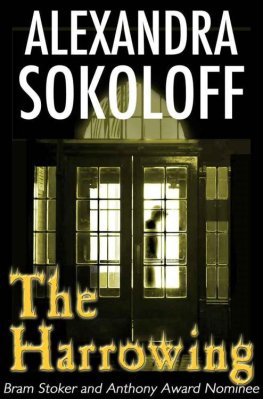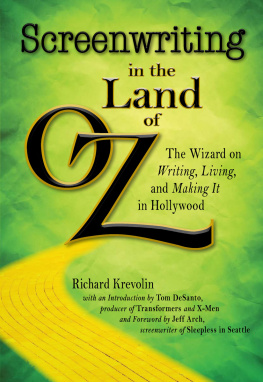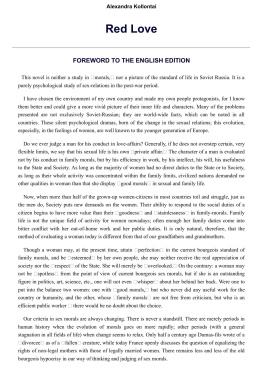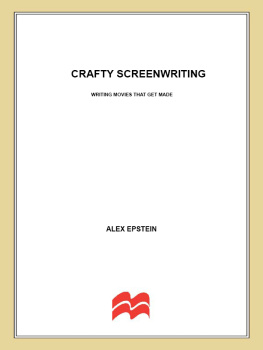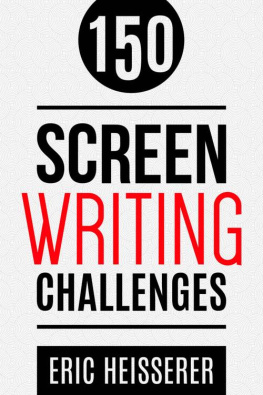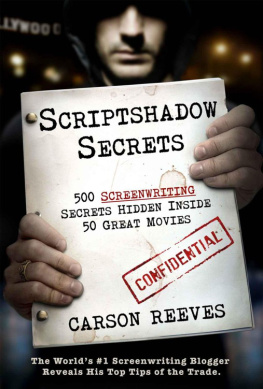Alexandra Sokoloff - Writing Love: Screenwriting Tricks for Authors II
Here you can read online Alexandra Sokoloff - Writing Love: Screenwriting Tricks for Authors II full text of the book (entire story) in english for free. Download pdf and epub, get meaning, cover and reviews about this ebook. year: 2011, genre: Art. Description of the work, (preface) as well as reviews are available. Best literature library LitArk.com created for fans of good reading and offers a wide selection of genres:
Romance novel
Science fiction
Adventure
Detective
Science
History
Home and family
Prose
Art
Politics
Computer
Non-fiction
Religion
Business
Children
Humor
Choose a favorite category and find really read worthwhile books. Enjoy immersion in the world of imagination, feel the emotions of the characters or learn something new for yourself, make an fascinating discovery.
- Book:Writing Love: Screenwriting Tricks for Authors II
- Author:
- Genre:
- Year:2011
- Rating:4 / 5
- Favourites:Add to favourites
- Your mark:
- 80
- 1
- 2
- 3
- 4
- 5
Writing Love: Screenwriting Tricks for Authors II: summary, description and annotation
We offer to read an annotation, description, summary or preface (depends on what the author of the book "Writing Love: Screenwriting Tricks for Authors II" wrote himself). If you haven't found the necessary information about the book — write in the comments, we will try to find it.
Writing Love: Screenwriting Tricks for Authors II — read online for free the complete book (whole text) full work
Below is the text of the book, divided by pages. System saving the place of the last page read, allows you to conveniently read the book "Writing Love: Screenwriting Tricks for Authors II" online for free, without having to search again every time where you left off. Put a bookmark, and you can go to the page where you finished reading at any time.
Font size:
Interval:
Bookmark:
WRITING LOVE
(Screenwriting Tricks for Authors, II)
by
Alexandra Sokoloff
Kindle Edition
Copyright 2011 by Alexandra Sokoloff
All rights reserved.
Cover design by Elaine Sokoloff
For more information about the author, please visit http://alexandrasokoloff.com
This ebook is licensed for your personal enjoyment only. This ebook may not be re-sold or given away to other people. If you would like to share this book with another person, please purchase an additional copy for each recipient. If youre reading this book and did not purchase it, or it was not purchased for your use only, then please return to Amazon.com and purchase your own copy. Thank you for respecting the hard work of this author.
Table of Contents
Introduction
Let me be very clear right up front. This is not a book on writing romance.
This book is a greatly expanded follow-up to Screenwriting Tricks For Authors , a manual that teaches authors how to steal I mean use screenwriting and filmmaking techniques to help them write better, more appealing books (and have more fun doing it!). Writing Love contains all of the general story structure material from the first book, and uses examples from all genres to illustrate these story structure principles.
But for this book I have also added a specific focus on the key story elements and structure tricks used in writing love (including love subplots), and the ten story breakdowns in this book are all romantic comedy, romantic adventure, period romance and romantic suspense. So yes, this book should be extremely useful for romance writers (who tend to get a lot out of my workshops anyway), but its organized in a way that I hope will be useful to writers of all genres.
Why Film Structure?
Well, lets face it. Book agents and editors and the whole publishing business in general have been corrupted I mean, influenced by Hollywood. The blockbuster mentality is rampant. Even though the bottom line is always a great book, publishing houses increasingly want big ideas; fast, visceral, visual plots; and a big, high concept hook for marketing. And if youre e-publishing, its even more important to make sure your book stands out from the crowd.
But the good news is, that means authors can give themselves an edge by stealing using some of these film techniques to make their stories more immediately appealing and easily marketable and by the way, to create better, more engaging books. Ive found the film techniques Ive learned and use as a screenwriter are invaluable in my own novel writing, and I believe no, actually I know that any novelist, from aspiring to multi-published, can benefit from these screenwriting tricks of the trade.
A novelist who samples this book will probably be wondering why I spend the bulk of my time analyzing films when Im talking primarily to authors. Good question.
The thing is, film is such a compressed and concise medium that its like seeing an X-ray of a story. In film you have two hours, really a little less, to tell the story. Its a very stripped-down form that has enormous emotional power. Plus weve usually seen more of these movies than weve read specific books, so theyre a more universal form of reference for discussion.
Its often easier to see the mechanics of structure in a film than in a novel.
And even beyond that, studying movies is fun, and fun is something writers just dont let themselves have enough of. If you train yourself to watch for some of these structural elements, then every time you go to the movies or watch something on television, youre actually honing your craft (even on a date or while spending quality time with your loved ones!), and after a while you wont even notice youre doing it.
When the work is play, youve got the best of all possible worlds.
Why Love?
Its been a year and a half since I wrote Screenwriting Tricks for Authors , and I had been working on a general revision of that book to incorporate all of the new discoveries Ive been making from writing my own novels, from teaching workshops, and from interfacing with my students and blog readers about their story problems and discoveries. One of the things I most wanted to do, at my readers requests, was include more examples from love stories and comedies. I admit it, Im a thriller writer, and I delve in paranormal, supernatural mystery and sometimes horror, and my teaching examples can run toward the well, dark is a good word, but homicidal often fits.
Then as I was reviewing a lot of romantic comedies and romantic suspense for great and teachable examples of key story elements and storytelling techniques, it dawned on me how much more useful it would be to let the first workbook stand as is and move forward by concentrating the new material in this book, and each subsequent book, on just one genre at a time.
Ive included all the general information on the Three-Act, Eight-Sequence Structure from the first book, and Ive expanded on the key story elements, so this book will also work just fine as a general introduction to all the story principles I cover in my workshops.
But in this book, were also going to look at some particular storytelling tricks of writing love, with ten full story breakdowns of popular and classic romance films.
One powerfully effective technique of developing stronger stories that I am always trying to demonstrate to writers is the idea of working with a Master List , that is, a Top Ten list of their own favorite stories in their specific genre. So it made sense for me to organize this new book by making my own list of ten love stories and analyzing those in-depth, looking closely at how these films handle key elements, both of general storytelling and those elements specific to love stories. (Ive focused the breakdowns mostly on romantic comedy rather than darker subgenres like urban fantasy, although I do include a romantic suspense and romantic adventure, and a romantic fantasy. Ill have to save paranormal thrillers and urban fantasy for another book.)
As I worked my way through the list I was finding patterns and elements of love stories that Id never been consciously aware of before, but after my third or fourth story breakdown I realized how very common certain elements are to love stories of all kinds, and how helpful it is to know and name those elements every time you start out to write a love story or love subplot.
Its my hope that you will have the same breakthroughs and discoveries of your own, about whatever genre you work in, as we work through the stories and elements in this book.
So lets get started, with a general story structure review.
PART ONE: Story Structure
1. The Master List
There are four pillars to these techniques were going to be working with:
1. Basic film story structure: the Three-Act, Eight-Sequence structure .
USC Film School teaches it, the screenwriting story structure gurus teach it, all film execs and producers are aware of it even if its only in a vague way, and even screenwriters who claim not to follow this structure pattern (and I could name names!) do it to some extent or another. Now youre going to learn it.
2. The concept of story patterns, types, or kinds .
Along with breaking down basic story structure that is applicable to all genres, were going to start looking at the dozens well, more like hundreds of story patterns that exist within that basic structure, such as the Chosen One story, the Three-Brother or Three-Sister structure, the Road Trip, False Identity, Reluctant Witness, Fish Out Of Water, the Magical Day The list is as long as your imagination. Im not exaggerating when I say this may be the most important concept you ever learn about story structure.
3. Story elements and structures specific to romance and love stories .
Font size:
Interval:
Bookmark:
Similar books «Writing Love: Screenwriting Tricks for Authors II»
Look at similar books to Writing Love: Screenwriting Tricks for Authors II. We have selected literature similar in name and meaning in the hope of providing readers with more options to find new, interesting, not yet read works.
Discussion, reviews of the book Writing Love: Screenwriting Tricks for Authors II and just readers' own opinions. Leave your comments, write what you think about the work, its meaning or the main characters. Specify what exactly you liked and what you didn't like, and why you think so.




